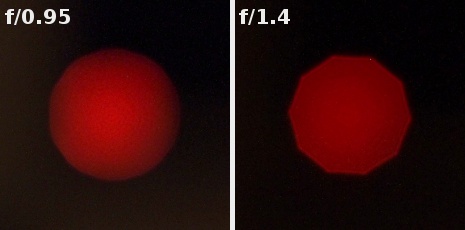Voigtlander Nokton 17.5 mm f/0.95 Aspherical
5. Chromatic and spherical aberration
Chromatic aberration
The Voigtlander 0.95/17.5 is a very fast lens so the problems with the longitudinal chromatic aberration were to be expected. The constructors surprised us very nicely though by correcting that aberration in an exemplary manner. It can be seen in the photos, presented below.
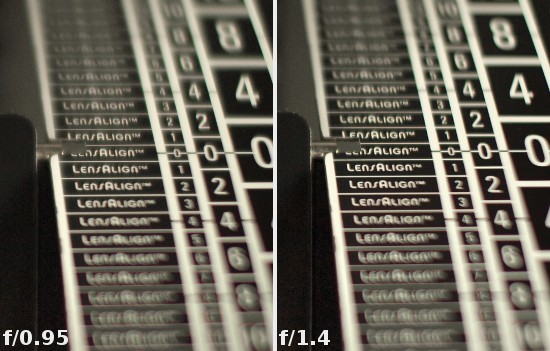 |
Please Support UsIf you enjoy our reviews and articles, and you want us to continue our work please, support our website by donating through PayPal. The funds are going to be used for paying our editorial team, renting servers, and equipping our testing studio; only that way we will be able to continue providing you interesting content for free. |
- - - - - - - - - - - - - - - - - - - - - - - - - - - - - - - - - - - - - - - - - - - - - - - -
A similar trick didn’t succeed in the case of the lateral chromatic aberration. Its value doesn’t depend on the value of the aperture and it remains about 0.12% across the range. Such a level is considered by us as medium so there is no serious reason to complain, especially that the parameters of this lens are really extreme.
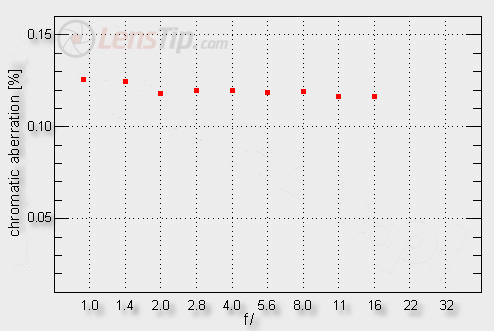
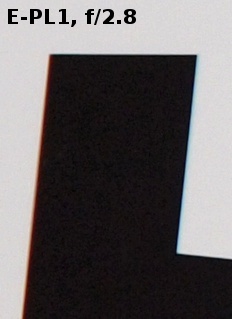 |
Spherical aberration
During tests of manual lenses the spherical aberration is easy to spot. I perform the resolution tests by finding an optimal position at the maximum relative aperture and then I take a series of photos stopping the lens down. When the stopping down ceases improving the resolution as efficiently as it should you can start suspecting that you deal here with the spherical aberration, causing the focus shift. Such an effect can be noticed in the case of the tested Voigtlander - you can present it on the resolution graph easily.
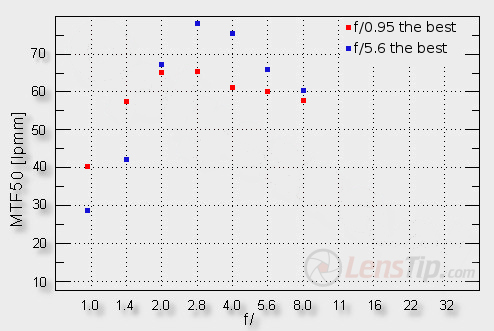
The red dots show a series of measurements taken in such a position of the focus ring where the result, obtained at the maximum relative aperture were the best of all. As you can notice the stopping down of the aperture helps you improve the results but the maximum values are not that impressing. Now you can reverse that situation and choose a series of measurements for such a position of the ring where the results by f/5.6 were the best. That series is marked by blue dots. You can notice that this time the numbers are very high for apertures ranging from f/2.8 to f/8.0 but near the maximum relative aperture they are weak.
If you have any doubts concerning the existence of the spherical aberration we can try to persuade you by showing photos of our autofocus testing chart.
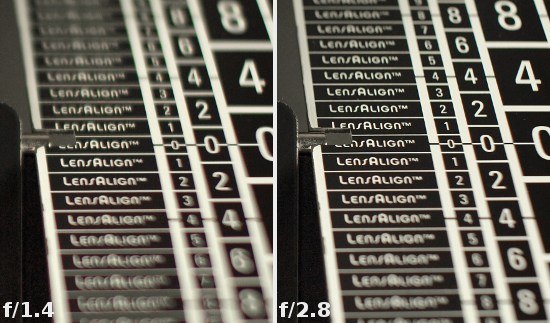 |
It becomes obvious here that the depth of field shifts towards objects situated further during the stopping down, revealing the “focus shift” phenomenon. The effect is perhaps not very pronounced because also the spherical aberration itself is not especially high. It doesn’t change the fact that its correction is not perfect and it is clearly visible.
That aberration can be also noticed in defocused images of light points. With such a short focal length it is difficult to get sufficiently big and even circles on both sides of the focus so this time we decided to show just those circles which you can see in the background while taking photos of objects situated closer. It is not difficult to see (especially by f/0.95) a distinct light fall-off, progressing from the centre of the ring to its edges – a classic symptom of badly corrected spherical aberration.
